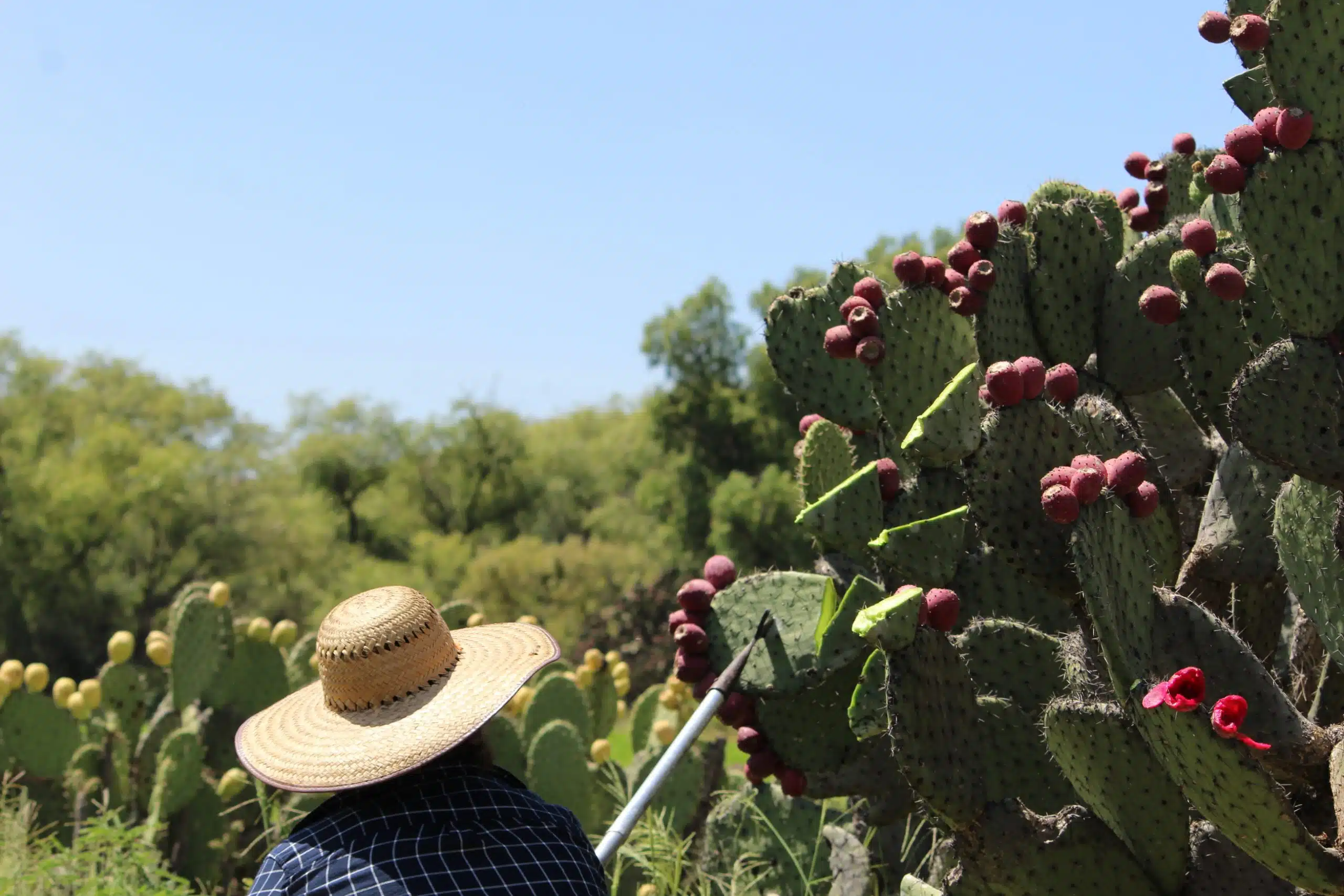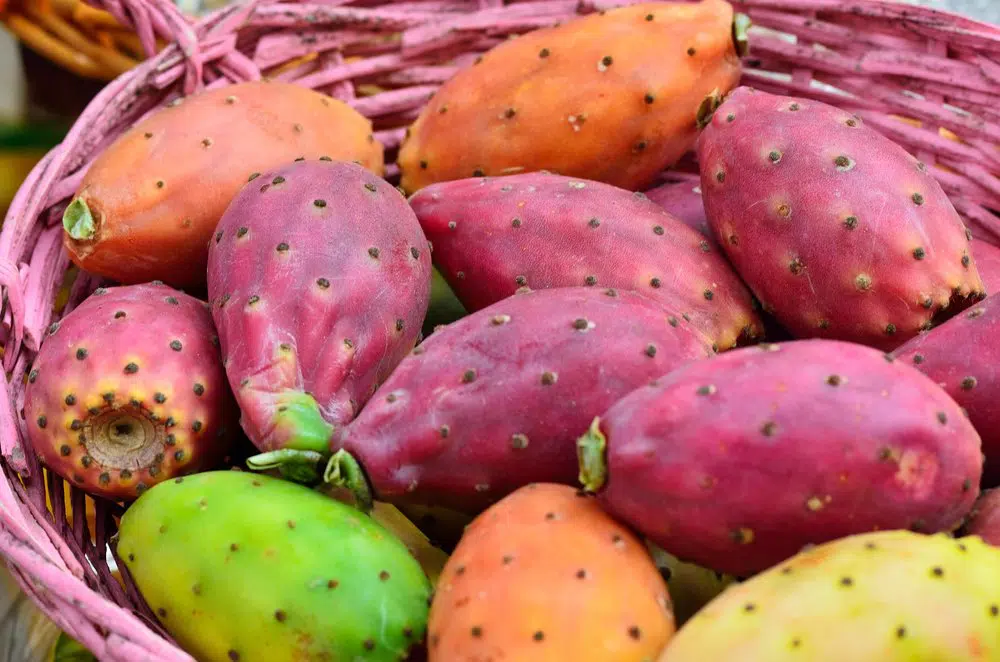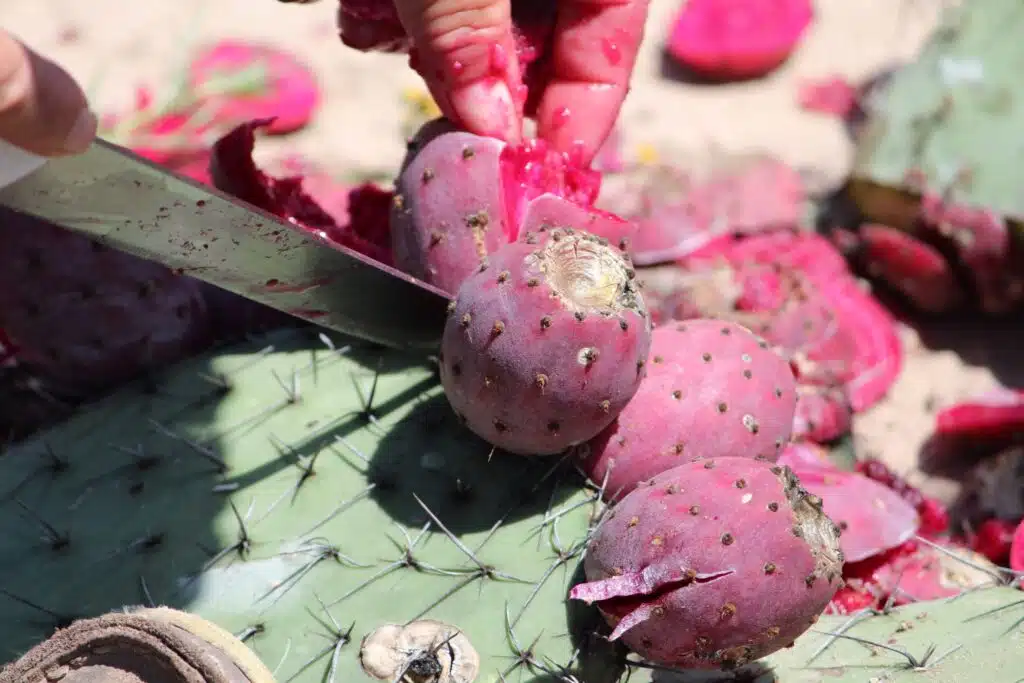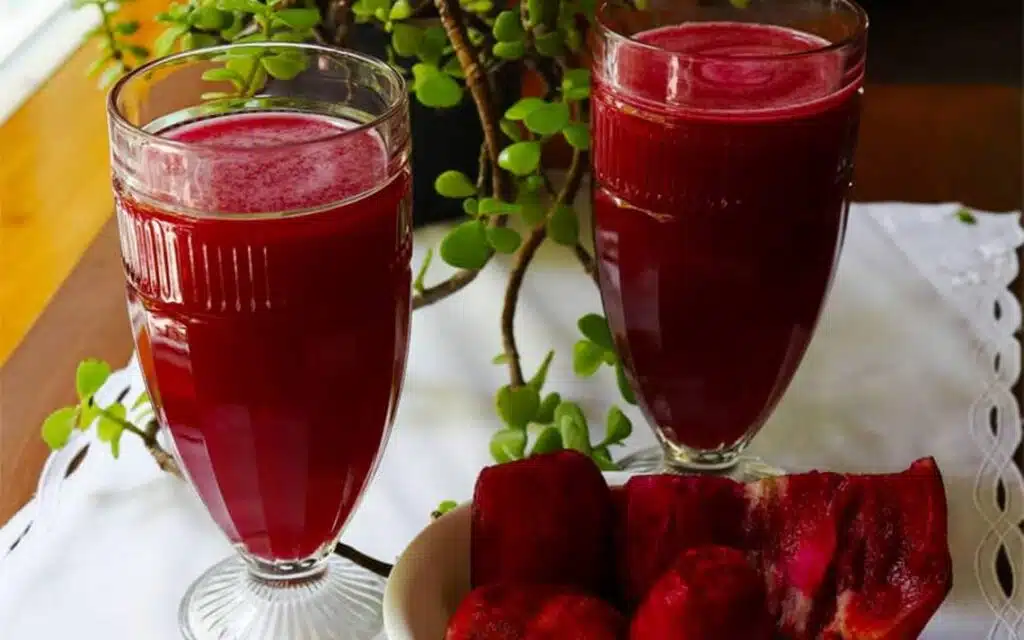Try Colonche! Mexico’s Timeless Prickly Pear Drink

The colonche is an alcoholic beverage nearly 2000 years old and is prepared mainly in San Luis Potosí, Aguascalientes, Guanajuato, northern Jalisco, and Zacatecas.
Like its cousin pulque, it is fermented and of pre-Hispanic origin, with the pulp of the prickly pear, the star ingredient.
Today, I will tell you more about its background and preparation; it is delicious!
The main characteristic of colonche, besides its alcohol content, is its brilliant reddish color, which is why it is also known as “Sangre de tuna” (prickly pear blood).
Our pre-Hispanic ancestors have left a vast legacy in Mexico, with countless traditions and stories that cling to remain present over time.
How is Colonche made?


The procedure for making colonche has not changed for hundreds of years.
First, the prickly pears are harvested from the mountain, cleaned by removing the peel, and squeezed to obtain their juice.
Then they are strained through an ixtle sieve to eliminate the seeds.
The juice obtained is boiled and left to stand for 3 to 4 days to ferment naturally, ensuring it doesn’t become too acidic.
Sometimes a little colonche is added to accelerate the fermentation process, and also some of the tuna shells, since these contain, in greater quantity, the microorganisms that cause fermentation.
What does Colonche taste like?

The texture on the palate is similar to pulque, but its flavor is entirely different. More on the citrusy side.
After the fermentation process, colonche can reach 26 alcoholic degrees.
The result is a pleasant fizzy drink that becomes sour over time.
Currently, this drink is in danger of disappearing, so it is important to spread the word to preserve its consumption and tradition.
The fermentation process is one of the most widely used ancestral techniques in the preservation, transformation, and production of food and beverages.
Thus, for the last five years in San Felípe Guanajuato, the “Festival del colonche” has been held, a celebration that exalts the elaboration of this drink.
Initially, it was obtained by fermenting the Cardona prickly pear; however, nowadays, some people make it with other varieties of red prickly pear and others with pitaya.
This is because the Cardona variety is considered a seasonal fruit since it only grows between July and October; Zacatecas was the first producer in the country.
A bit of history
It is known that colonche was consumed in Mexico more than two thousand years ago.
Although the word’s origin is uncertain, the Aztecs called it “nochoctli,” which means prickly pear wine.
It is considered a ritual drink to celebrate the August and September harvests.
Colonche is excellent for curing TB (tuberculosis) and some lung diseases.
Colonche recipe (the modern version)
Ingredients (4 servings approx):
- 10 red prickly pears, washed and shelled
- 1/2 cup vodka (you can also use rum)
- 2 liters of water
- Sugar to taste (optional if you prefer a sweeter drink)
Process:
- To obtain the juice, simply blend the prickly pears until you obtain a liquid consistency without pulp lumps
- Strain the juice to eliminate the seeds
- Boil it for a minimum of 30 minutes and a maximum of one hour
- After that time, remove it from the heat and let it cool
- Once it is at room temperature, add the vodka or rum and mix
- Pour into a glass bottle or container and put a metal or wooden lid (avoid plastic)
- Let it ferment in a dark, dry cupboard for three to four days
- After this time, you can sweeten the drink if you wish
- Place it in the refrigerator until it’s cold
- Serve and enjoy!
Conclusion
As I mentioned before, the colonche is in danger of extinction since one of its disadvantages is that it can only be consumed seasonally: from July to October, when the nopal cactus bears fruit.
It is almost an unknown drink and, consequently, little consumed in Mexico.
That is why some Mexican institutions have called for it to be recognized and continue its elaboration, which is an ancestral tradition.
During September, you can enjoy this beverage at the Colonche Fair held annually in Laguna de Guadalupe, Guanajuato.
Or prepare this delicious fermented beverage at home and share it with your family and friends.
Let’s keep Colonche alive!







I would love to have the recipe for this beverage.
Hey Toni, thanks for reaching out!
I’ve updated the post with the recipe. Enjoy!